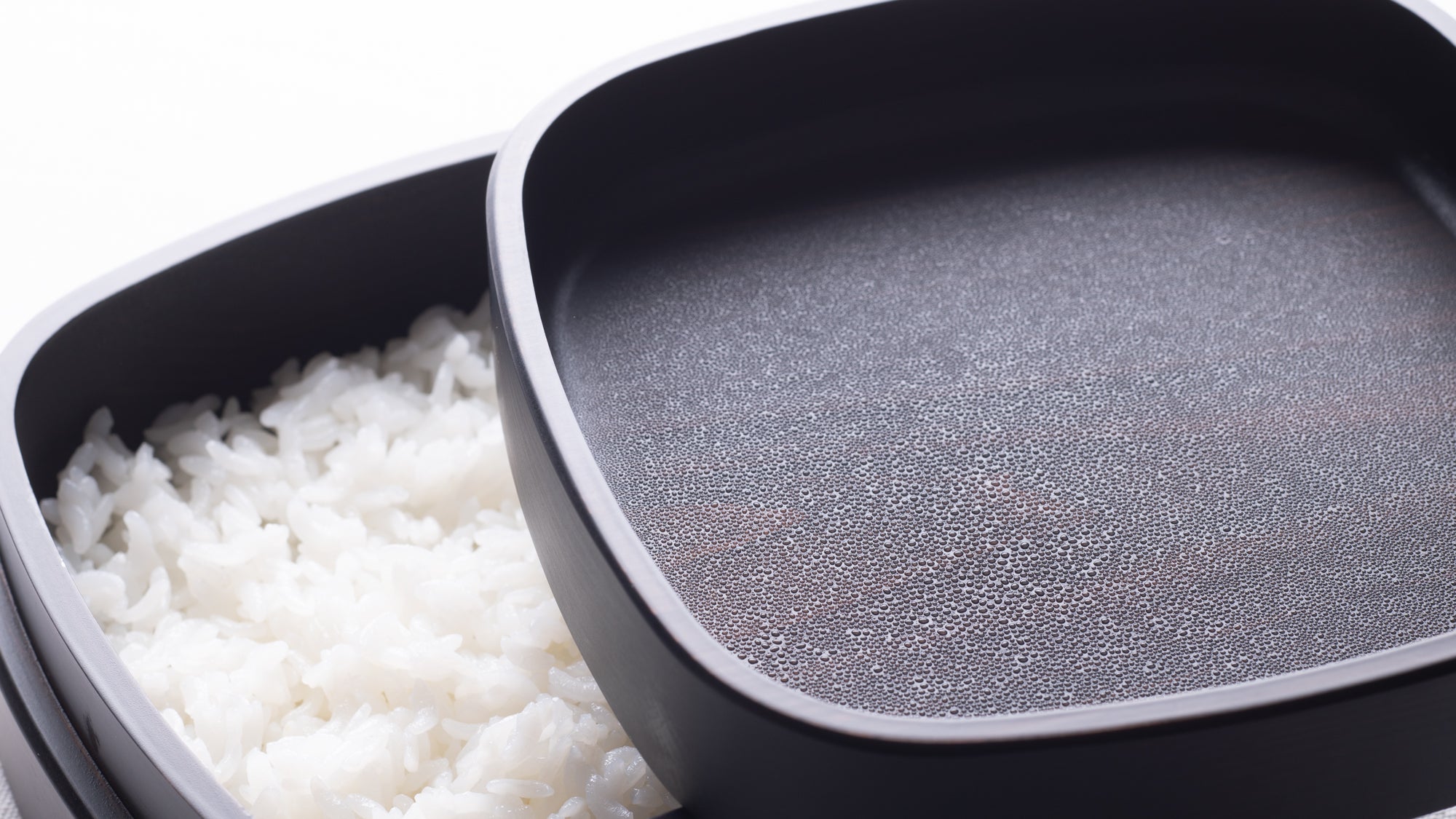
Nature's Gift in a Bento Box
Written by Team MUSUBI
The Warmth and Comfort of Wood The Hollowed Out Bento Box Series

Experience the soft, fresh aroma and smooth texture of Kishu cypress with the Hollowed Out Bento Box Series and boost the pleasure of your bento box lunches.
table of contents
Kishu Cypress: The perfect material for a bento box
Cypress, although slower in growth compared to cedar, has a higher density and a pleasing natural scent that makes it an ideal material to be used for building structures and lacquerware items. Additionally, its moisture buffering property enables it to absorb excess moisture and maintain a balance between the moisture level within the wood and its surroundings.

How a Hollowed Out Bento Box is made
These beautiful and functional Hollowed Out Bento Boxes are made with extreme care and precision. Employing specially designed machinery to manufacture each bento box, blocks of Japanese cypress are hollowed out perfectly to make the base of the bento box. Skilled craftsmen carefully examine each block of wood and make sure that each bento box showcases its most exquisite woodgrains. Then the bento box is hand-finished with a urethane coating and a layer of nano coating to provide a safe and strong surface to the bento box. It is understandable that only 10 Hollowed Out Bento Boxes can be manufactured in one day.
Each bento box is imbued with its own individual charm as each block of wood has differing knots and woodgrains.
Process of Manufacturing
Hollowing Out a Block of Wood

The first step in the manufacturing process is to hollow out blocks of Kishu cypress. Once hollowed out, craftsmen carefully inspect the hollowed out base of the bento box and then delicately sand down each one by hand.
Urethane/Nano Coating


Can cold rice really taste this good?
One of our staff members used the Hollowed Out Bento Box for a month. After using it for a whole month, what we discovered was quite amazing: even cold rice tasted better in a Hollowed Out Bento Box.
We tried a little experiment to see how this bento box keeps cold rice tasty and fluffy.
Here's how it turned out
We each filled a plastic bento box and a Hollowed Out Bento Box with hot white rice, then left them to cool slightly before closing their lids.
Condensation
After 3 hours, we opened each bento box to check for any differences in condensation.


The minute the lid was opened, it brought forth the subtle aroma of cypress.
Condition of the rice

The cold rice in the plastic bento box was soggy and soft. The grains were a bit sticky and bunched together.
The cold rice in the Hollowed Out Bento Box was not. Each grain was fairly firm and the flavor of the rice was close to its original flavor.
Grown in the rugged, mountainous areas of Wakayama Prefecture, Kishu cypress is one of three major cypress species in Japan. Despite its challenging environment of extreme temperature differences, this tree produces stunning wood with fine growth rings.
Kishu cypress is also characterized by its excellent durability. The high oil content of Kishu cypress gives it a subdued luster and a charm that develops over time with repeated use.
The Hollowed Out Bento Boxes from Tsunoda Seibee are sure to stand the test of time and can be nurtured to be used for many years to come.
Recommended Items
Hollowed Out Bento Boxes

The long-standing history of Tsunoda Seibee Shoten, located in Wakayama Prefecture, begins in 1830 near the end of the Edo period (c.1603-1867) as a specialty store of Kishu lacquerware. The origin of the store's name dates back to the Kanei period around 1620, when the merchant Tsunoda Seibee traveled from Kishu (present-day Wakayama Prefecture and Mie Prefecture) to Edo (present-day Tokyo) on foot to sell lacquerware made in Kishu.







Leave a comment
This site is protected by hCaptcha and the hCaptcha Privacy Policy and Terms of Service apply.